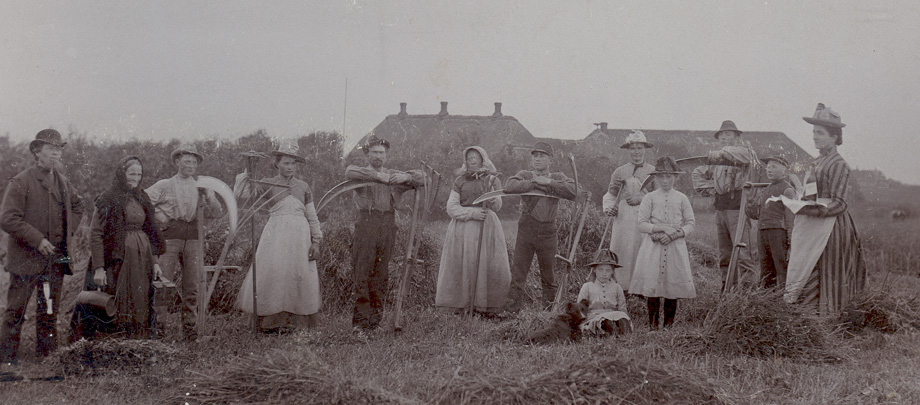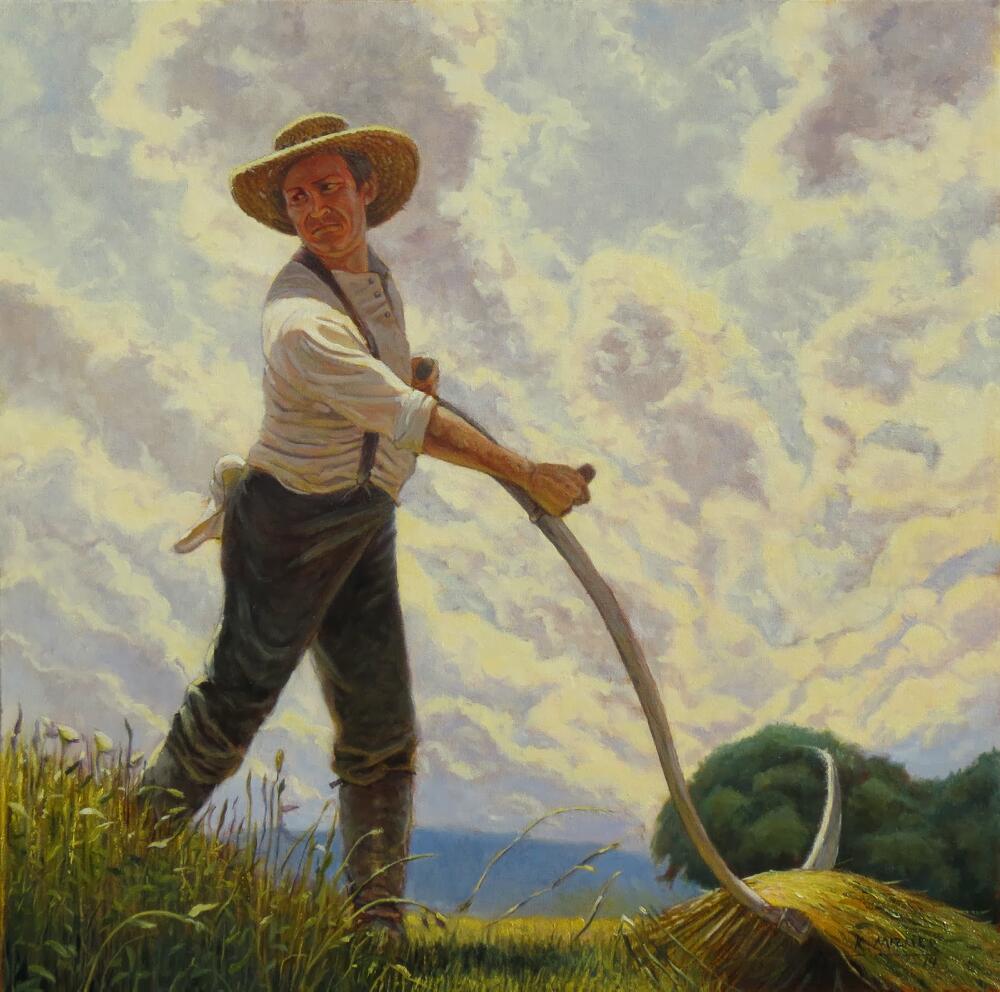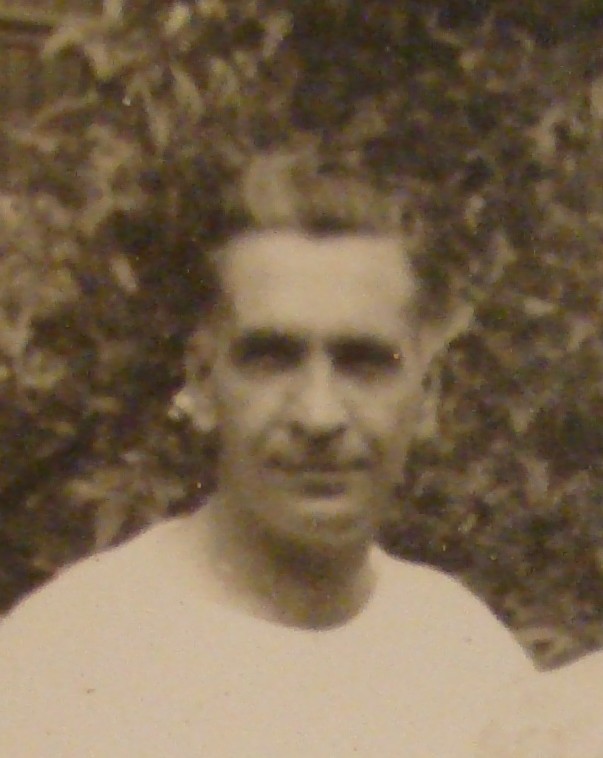
A Lesson in Time
One of the most
important lessons my father ever taught me was the art of
using a
scythe. It was a lesson passed down to him by his father
... and
generations of fathers before.
Today many people
don't even know what a scythe is, let alone how to use
one, even
though they’ve seen scythes in countless pictures of the
“Grim
Reaper”. But there was a time where every farm boy in Iowa
had to
master this tool before the age of ten. My father was one
of those
boys. 
If you see a scythe today it's likely to be in a museum or as a decorator piece hanging on a wall in a folksy restaurant. Certainly the classic scythe, with it's curved handle and long blade appears as artistic as any modern sculpture, but the design was purely utilitarian.
By the time my
father was 10, the likes of Deere and McCormick had
already relegated
scythes to only the smallest of holdings and weed patches.
But the
knowledge of how to use a scythe was still deemed
important. “You
never know when the horse will get sick or the McCormick
will break
down,” seemed like good advice.
Using a scythe is no
simple matter. It takes lots of practice … something not
in short
supply on Iowa farms in the 19th Century. If they knew
what they were doing, a crew of fathers and sons and
farmhands could
cut a field in a remarkably short time.  The
lead cutter, my father's
brother Adrian, started at the far left. Brother Bruce
followed to
his right, six or seven paces behind. My father and the
farmhands
then each followed six paces behind and to the left.
The
lead cutter, my father's
brother Adrian, started at the far left. Brother Bruce
followed to
his right, six or seven paces behind. My father and the
farmhands
then each followed six paces behind and to the left.
To a flock of
geese overhead, it must have looked like a flock of humans
flying in
formation.Each cut with a
scythe began with a blade pointed straight ahead and to
the right.
The cutter would then swing his blade around in an arc to
the left,
cutting a swath of grass or wheat in an eight-foot
semicircle. The
cut was done in a smooth sweep of the whole body, holding
the blade
perfectly level just a few inches above the ground. At the
end of
the sweep, the cutter twisted his whole body back to the
right and
took one step forward to line up for the next cut. Each
cutter in
the line would do the same.
Before long the
whole crew would be sweeping and stepping forward in
unison. It was
the closest the people of Packwood, Iowa would ever come
to attending
a ballet. On a windless summer's day the silence was
broken only by
the whispering sweep of the blades, a steady cadence,
stepping a pace
forward every three seconds.
But what did this
teach and why would my father and his father think it
important?
Teamwork, certainly. A crew could not be
effective without a coordinated effort. Posture, too.
“Stand ramrod straight”, my father said. “If you
don't, you'll get a backache.”
Certainly a metaphor for life. But
there's more. There's pride in doing whatever it is you
do. Look at
a field that's been cut with scythes, and if the stubble
is smooth
and even and each sweep of the blade left and neat windrow
of stacked
wheat. You could tell if a cutter was skilled and took
pride in his
job. … and by virtue of that, pride in himself.
Harvesting with
scythes was already long gone by the time Adrian and Bruce
left the
farm for the trenches of World War I, after which they
returned to
jobs other than farming. My father, too, hung up the
scythe to
become a chef. Perhaps the heat of a kitchen was less
daunting than
the heat of an Iowa summer. But the lesson he learned from
his
father and passed on stuck. It doesn't matter what you do.
Do it
right, take pride in your work and you will feel better
about
yourself. A scythe is a useful tool for that lesson.